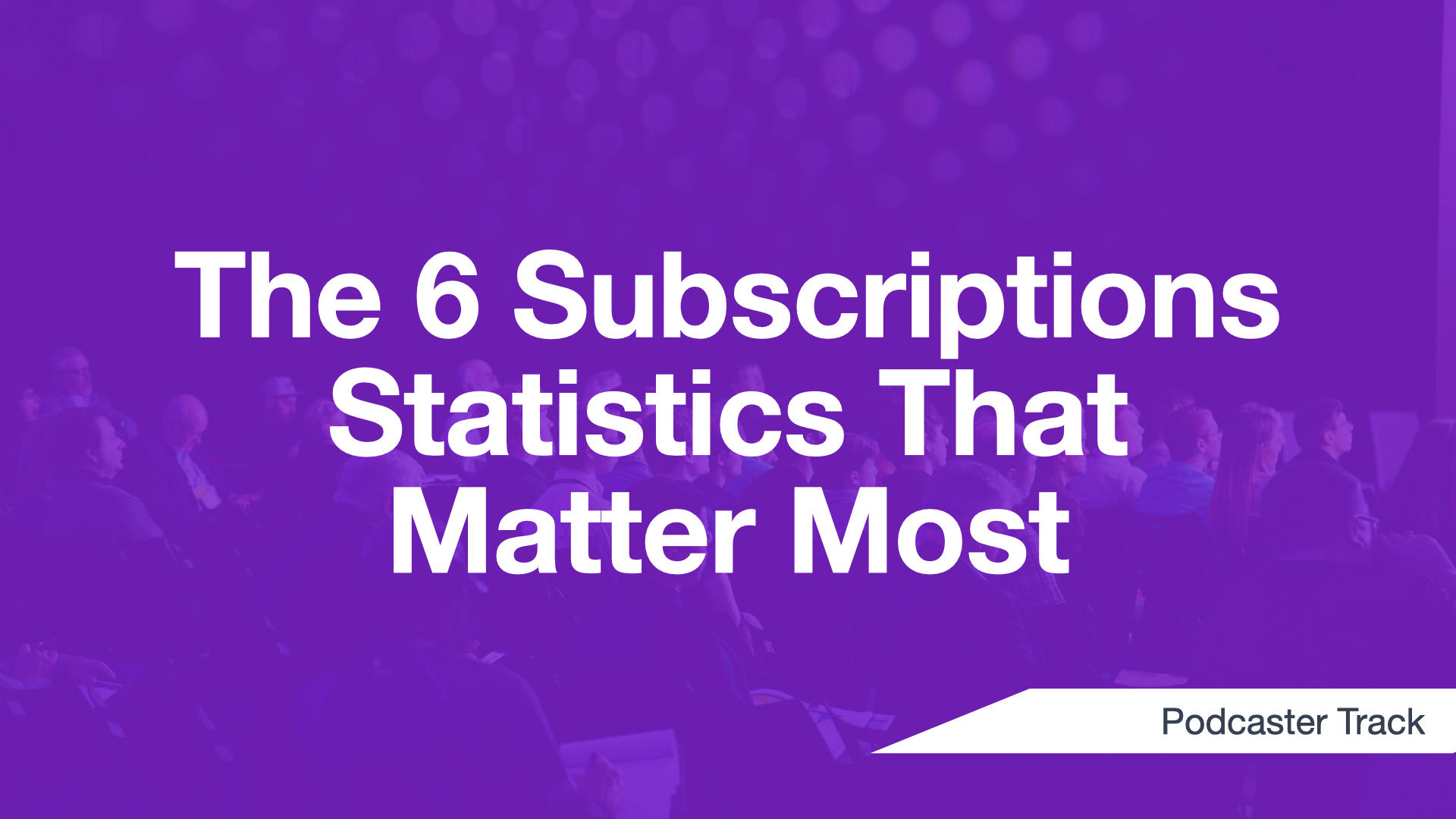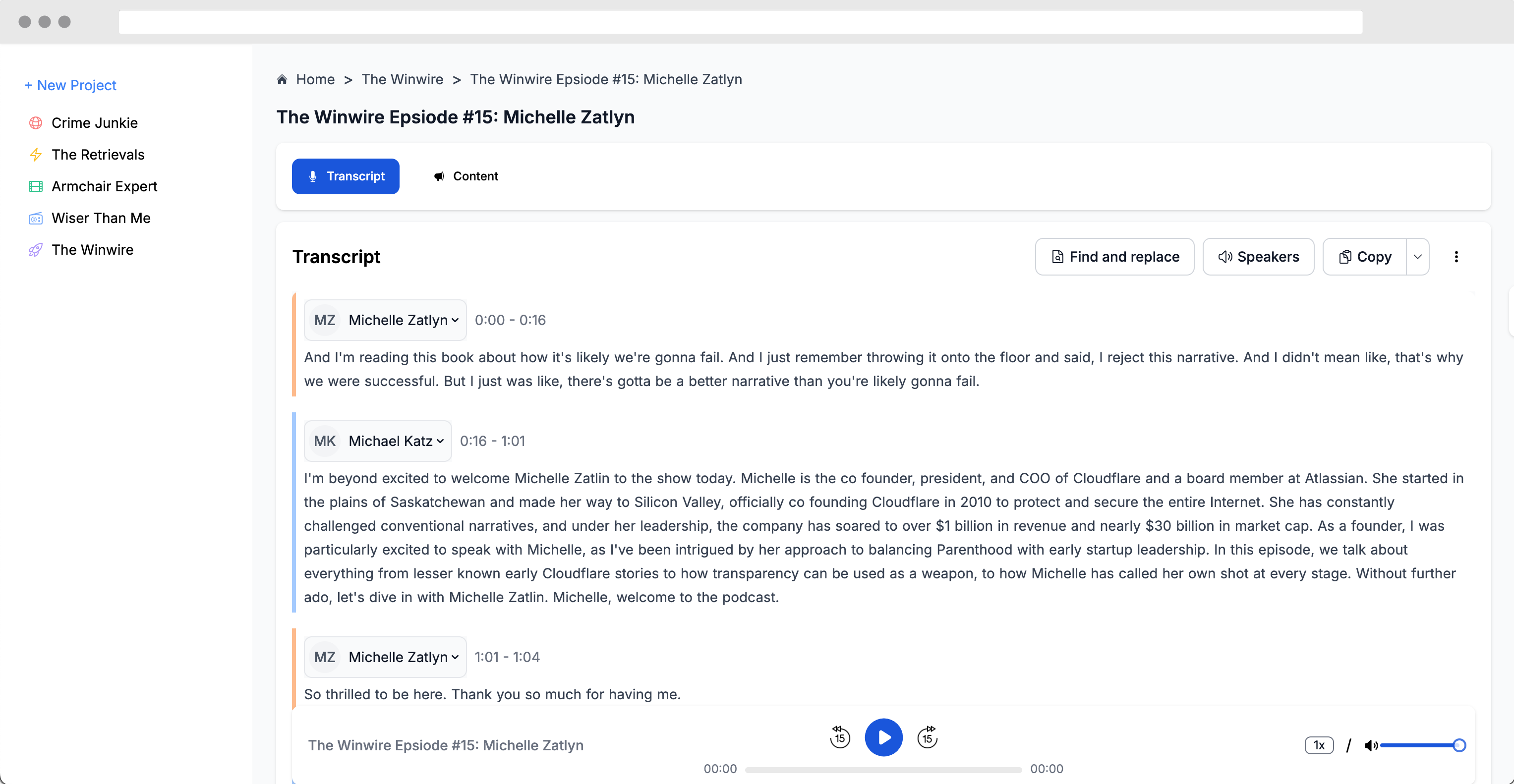The 6 Subscriptions Statistics That Matter Most

Key Takeaways
Monthly Recurring Revenue (MRR) is Crucial: Understanding and tracking MRR is essential for gauging the financial health of your subscription model. It combines the revenue from monthly subscribers and a portion of annual subscriptions.
Average Revenue Per User (ARPU) Matters: Focusing on ARPU can significantly impact your total revenue. Strategies like raising prices or offering higher-priced tiers can increase ARPU.
Audience Conversion Rate is Key: This metric shows how effectively you are converting your audience into paying subscribers. Offering compelling benefits beyond ad-free content can boost this rate.
Subscriber Activation Rate is Vital: Ensuring subscribers are engaging with the content they pay for is crucial. High activation rates indicate that subscribers find value in their subscription.
Churn Rate Management: Monitoring and managing churn rate is essential for long-term subscription success. Strategies like offering annual subscriptions and understanding subscriber preferences can help reduce churn.
Overview
David Stern, founder and CEO of Supporting Cast, discussed the six key subscription metrics for podcasters. He emphasized the importance of monthly recurring revenue (MRR) and average revenue per user (ARPU) as primary indicators of subscription health.
Stern highlighted that while total subscriber numbers are often the focus, ARPU can significantly impact overall revenue, as demonstrated by examples from Supporting Cast's clients.
He also covered strategies to increase ARPU, such as raising prices and offering higher-priced tiers, and stressed the importance of audience conversion rates and subscriber activation rates.
Lastly, Stern addressed churn rates and landing page conversion rates, providing actionable insights to optimize these metrics and improve subscription performance.
Core Concepts
Monthly Recurring Revenue (MRR) and Its Importance
Understanding MRR is fundamental for any subscription-based business. It provides a clear picture of the revenue generated each month from subscribers.
Key Points:
MRR includes revenue from monthly subscribers and a fraction of annual subscriptions.
Tracking MRR helps in understanding the financial health and growth trajectory of the subscription model.
MRR can show trends and patterns, such as steady growth, plateaus, or significant increases.
Examples:
A partner's MRR graph showed steady growth for a few years, followed by a plateau and then a significant increase due to a price hike.
Another example highlighted how MRR is a product of total subscribers and ARPU, emphasizing the importance of both metrics.
Quotes:
This graph is one of our longer-term partners what their monthly recurring revenue has looked like since the dawn of their subscription.
A lot of our partners will grow pretty steadily for two to three years, then start to plateau.
Average Revenue Per User (ARPU) and Strategies to Increase It
ARPU is a critical metric that indicates the average revenue generated from each subscriber. It is as important as the total number of subscribers.
Key Points:
ARPU can vary significantly between different subscription programs.
Higher ARPU can lead to substantial revenue differences even with the same number of subscribers.
Strategies to increase ARPU include raising prices, offering higher-priced tiers, and enabling a "pay what you want" option.
Examples:
A program with 25,000 subscribers had the same MRR as another with only 6,000 subscribers due to a higher ARPU.
Implementing a "pay what you want" option led to a 15-35% increase in revenue over time.
Quotes:
The ARPU explains a huge difference in total revenue.
In literally 100% of cases where we have done this, the increase in monthly recurring revenue vastly outweighs any increase in churn.
Audience Conversion Rate and Effective Strategies
The audience conversion rate measures how effectively you are converting your audience into paying subscribers. This metric is influenced by the benefits offered and the marketing strategies employed.
Key Points:
Ad-free content alone typically results in low conversion rates (0.5-1%).
Offering additional benefits like bonus content, early access, and community engagement can significantly boost conversion rates.
Effective promotion and authentic calls to action are crucial for increasing conversion rates.
Examples:
Programs that paywall the majority of their content see conversion rates as high as 20-25%.
Regularly promoting bonus content and using vanity URLs for calls to action can drive higher conversion rates.
Quotes:
Your audience conversion rate is really telling you whether you have persuaded your listeners that your subscription is worth paying for.
If you do a good job of promoting this, then you will land up in the 5-10% range over time.
Subscriber Activation Rate and Its Impact
The subscriber activation rate measures how many subscribers are actively engaging with the content they pay for. High activation rates indicate that subscribers find value in their subscription.
Key Points:
Activation rates should ideally be above 95%.
Allowing subscribers to use their existing podcast apps can significantly increase activation rates.
Immediate onboarding and reminders for inactive subscribers can help boost activation rates.
Examples:
A show with a 99% activation rate ensured subscribers connected their podcast apps immediately after joining.
Email reminders for inactive subscribers helped increase activation rates.
Quotes:
We like this number to be higher than 95%. We've seen it get higher than 99% in some cases.
Let people use their existing podcast apps. Don't make them switch over to another app.
Churn Rate and Strategies to Reduce It
Churn rate measures the percentage of subscribers who cancel their subscription within a given period. Managing churn is crucial for maintaining a stable subscriber base.
Key Points:
Churn rates are typically low in the first six months to a year but increase over time.
Annual subscribers have lower churn rates compared to monthly subscribers.
Strategies to reduce churn include offering annual subscriptions, understanding subscriber preferences, and ensuring easy access to benefits.
Examples:
A partner's churn rate graph showed low churn initially, with spikes during a host change and a price increase.
Offering a discount for annual subscriptions helped reduce churn rates.
Quotes:
The single most important driver of churn is just how old your subscription is.
Annual subscribers only have that opportunity once a year, so just by being an annual subscriber, you are far less likely to churn.
Landing Page Conversion Rate and Best Practices
The landing page conversion rate measures the effectiveness of converting visitors to your landing page into paying subscribers. Optimizing this rate is crucial for maximizing subscriptions.
Key Points:
Effective landing pages are simple, branded, and offer clear benefits.
Offering both monthly and annual plans can cater to different subscriber preferences.
Avoiding unnecessary friction, such as asking for too much information, can improve conversion rates.
Examples:
The top-performing landing pages had conversion rates above 20% and were simple, branded, and offered clear benefits.
Pages that avoided asking for usernames, passwords, or physical addresses had higher conversion rates.
Quotes:
These three were the ones that came out on top. They all had north of 20% landing page conversion rate.
Don't ask for a username and password. Don't ask for a physical address.
Conclusion
The talk provided a comprehensive overview of the key metrics that matter most for subscription-based businesses. Understanding and tracking metrics like MRR, ARPU, audience conversion rate, subscriber activation rate, churn rate, and landing page conversion rate are crucial for optimizing subscription models. By focusing on these metrics and implementing effective strategies, businesses can enhance their subscription revenue and ensure long-term success.
Food for Thought
What additional benefits can you offer to boost your audience conversion rate and make your subscription more appealing?
How can you improve your subscriber activation rate to ensure that subscribers are engaging with the content they pay for?
How can you leverage your existing audience to increase your ARPU without alienating your subscribers?

The average revenue per user ranges from below $2 to close to $15.
Raising prices has resulted in an extra 15% to 35% more revenue over time.
Conversion rates for ad-free benefits are typically between 0.5% and 1%.
Paywalling the majority of a show can result in conversion rates of 20% to 25%.
Subscriber activation rates should be higher than 95%, with some cases exceeding 99%.
Churn rates for long-standing subscriptions typically range from 1.5% to 3.5%.




